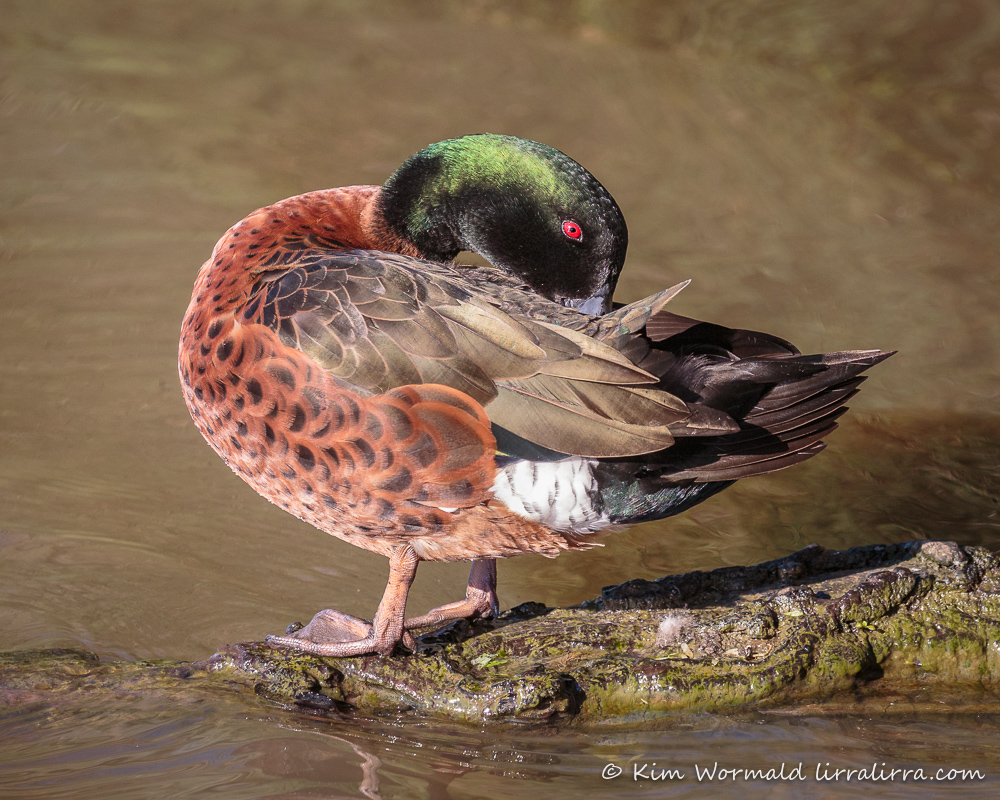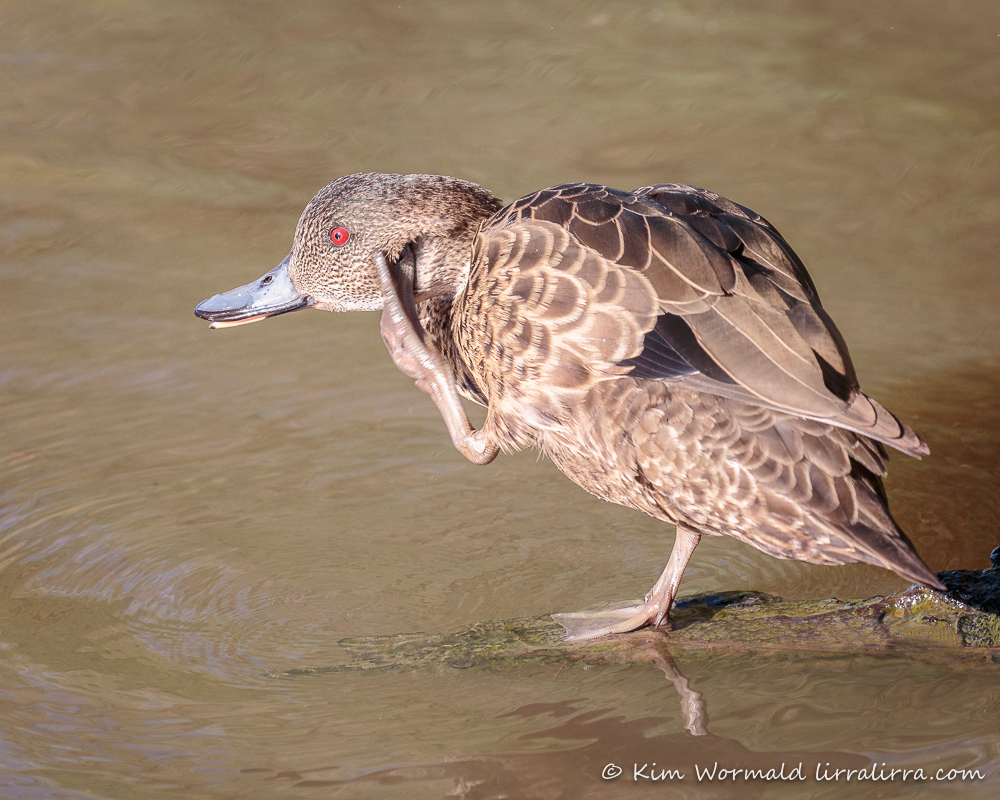What a richly-coloured, and very lucky, bird.

Chestnut Teal (Anas castanea) – male, breeding plumage
1/1000, f/7.1, ISO 800
I was out and about with the U3A Birding and Bird Photography group this week when we wandered along to the Bushy Park Wetlands in Glen Waverley. The usual suspects flew in at the sight of us, mistakenly thinking we’d brought food. There were Eurasian Coot, Australasian Swamphen with their long legs dangling, Pacific Black Duck, a flyover by a White-faced Heron and a lovely little group of Chestnut Teal.
Male Chestnut Teal can be a little tricky to photograph as definition can be lost, either in their black faces or in the bright white patch that easily becomes over-exposed. They are quite magnificent birds with their glossy green-black heads, rich chestnut fringing the feathers of their neck, chest and flanks and their bright red eye. The texture of their webbed feet is interesting too.
Chestnut Teal are small dabbling ducks that feed by upending themselves in fairly shallow water to eat aquatic plants and bugs.
 Chestnut Teal (Anas castanea) – female
Chestnut Teal (Anas castanea) – female
1/1000, f/6.3, ISO 800
Female Chestnut Teal are regularly confused with the slightly smaller Grey Teal but the more you look the more easily they can be distinguished from each other. Chestnut Teal females are generally darker and they lack the distinctly white chin and throat of the Grey Teal.
Today’s birds took turns to perch at the edge of the pond and preen. They are lucky to have stayed safe during the Victorian duck shooting season, which ended last weekend. According to Laurie Levy from the Coalition Against Duck Shooting, this was the quietest season on record. Despite this, cruelty offences and regulation breaches by duck shooters were documented. CADS rescuers retrieved shot protected species from the wetlands, including coot, Australasian Shoveler, Freckled Duck, Australasian Grebe, Banded Stilt, Caspian Tern, cockatoo, Silver Gull, swamphen and Black Swan. Regional Victorians Opposed to Duck Shooting expressed hope that nature-based tourism will replace the annual incidents of trespass and noise that distresses children and animals, and decimates native birds. RVOTDS said that even after the season the wetlands, often adjoining their properties, are left littered and that, ‘Amongst the ammunition cartridges and soiled toilet paper will be dead, wounded, terrified birds and bird body parts, not conducive to family picnics, bird watching or photography.’
I hope, passionately, that the Victorian Government joins Queensland, NSW and WA to permanently ban recreational duck shooting and that our struggling native waterbirds are no longer killed to pander to the sickening wishes of 0.4% of the population. I am feeling very hopeful thanks to the low number of shooters on the wetlands this year and the high number of bird-lovers speaking out.
Happy birding
Kim
~ thank you for visiting
~ if you’d like to join subscribers receiving a weekly email when lirralirra is updated, please subscribe above right

LOVE those beautiful survivors.
And fervently hope that the obscenity of killing for pleasure is permanently banned.
It’s great to know how many people care, thank you. I hope we are slowly but surely winning the battle (quickly and surely would be even better).
Very well said! Duck shooting is dying and long overdue to be thrown in the dustbin of history. I’m glad this beautiful Chestnut Teal couple survived the season. They are magnificent!
I totally agree with you Alyssa! I know the physical and emotional effort you put into rescuing injured birds and cleaning up the wetlands during the shooting season, hopefully you’ll soon be able to go to wetlands to relax and enjoy their beauty.